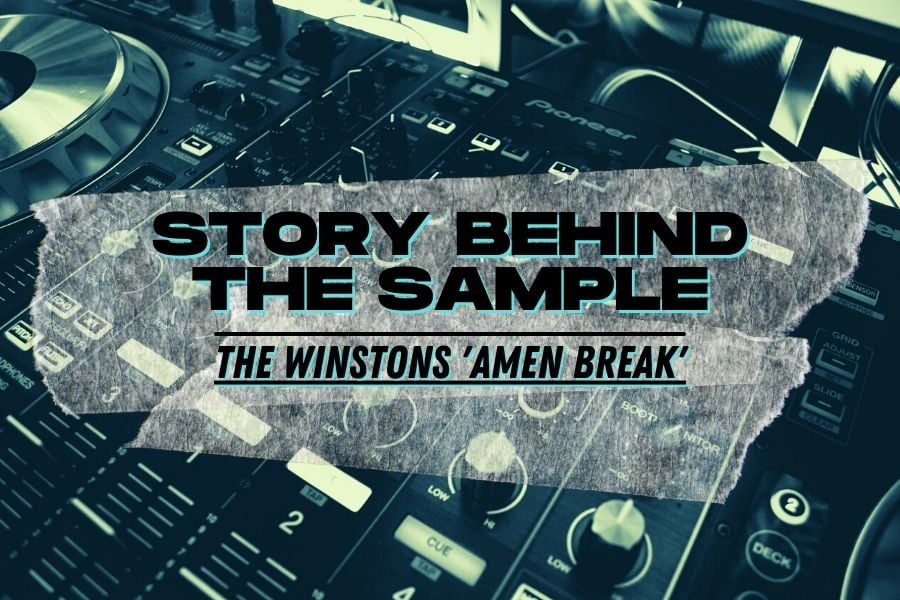It’s 1969 and the summer of love is in full swing. All over the country, young Americans are attempting to throw off the legacy left to them by their parents. On the well-kempt grass of Atlanta’s parks, supine figures lay around debating the Vietnam War, the Black Panthers, and the newly inaugurated Richard Nixon.
But in a smokey recording studio downtown, a very different piece of history is being made because a little-known band called The Winstons are about to spend 20 minted writing a “throwaway song” that would come to define two decades of popular music. I’m talking about the most sampled song in the history of music, ‘Amen Brother’.
The Winstons were a soul band who had been making their living touring around the southern states. The group was led by Richard Lewis Spencer, a talented saxophonist and teacher who, at the time, was also part of Otis Redding’s backing band and that of Cutis Mayfield. Spencer, however, was keen to make a success of himself on his own terms and so, in 1969 went to Atlanta to record the single ‘Color Him Father’ with The Winstons.
The track was working well, and Spencer was confident it would be a hit. What he was less confident about, was what his band were going to use for the B-side. In 20 minutes, The Winstons cracked out ‘Amen Brother’, an improvised jam based on a guitar riff Curtis Mayfield had shown Spencer whilst he was playing with The Impressions. But, despite being dashed off in a hurry, ‘Amen Brother’ would go on to capture the imagination of countless musicians in the following decades.
With the proliferation of hip-hop and electronic music in the 1980s, breakbeats became an important commodity. Breakbeats were sections in soul, funk, disco, and R&B tracks in which the drummer performed an elaborate 4/4 fill that allowed listeners the opportunity to dance without interruption.
In the 1980s, hip-hop artists started to manipulate vinyl records to isolate these drum fills, going on to use them as the centre point of their own songs. The break that drummer Gregory Coleman performed on ‘Amen Brother’ caught the attention of many of these artists, and became a staple of the laid back classic hip-hop sound.
But, for Coleman, the break was just something he’d come up with to “fill time” in a track dominated by Spencer’s horn section. Apparently, Spencer gave Coleman an idea of the kind of sound he wanted but remembers that his drummer “didn’t care for it”. Colemon was eventually persuaded and went on to make music history., not that he knew it at the time. For almost two decades, ‘Amen Brother’ remained unappreciated.
That is, until DJs started slowing down the fill from its original tempo of 135BPM to around 90BPM – something of a sweet spot for that hip-hop sound. The fill was later popularised by the pioneering female rapper Salt-N-Pepa, who sampled the ‘Amen’ break in her 1986 track ‘I Desire’. Later, N.W.A. used the break as the foundation for their song ‘Straight Outta Compton’.
Having defined the sound of US hip-hop, the ‘Amen’ Break then crossed over the Atlantic and ended up in the hands of UK electronic artists. The break acted as the catalyst for an explosion of dance music including drum n’ bass, jungle, and house.
In the hands of artists such as The Prodigy, who used the ‘Amen’ break in their track ‘Firestarter’, the break was sped up to around 170BPM and quickly came to define the sound of the UK rave scene throughout the 1990s. The break was quickly woven into the very fabric of music culture and can be found in everything from Oasis’ ‘D’You Know What I Mean?’, to Amy Winehouse’s classic track ‘You Know I’m No Good’. People even went so far as to have the break’s waveform tattooed into their skin and, today, there are countless ageing DJs who would be only too happy to show you.
So why has the ‘Amen’ break proved to have such enduring appeal? Well, as Michael Schneider, author of A Beginner’s Guide to Constructing the Universe pointed out, if you analyse the waveform of Coleman’s break, you can see that it perfectly matches the ancient Greek beauty standard known as the golden ratio. Remember those photographs of drunken reveller’s that seemed to match the perspectives found in Leonardo Da Vinci’s artworks?
Well, those were said to be composed according to the golden ratio as well. Basically, it’s all about proportion and harmony in structure. Neoclassical architecture? Golden ratio. Debussy? Golden ratio. The ‘Amen’ break? Golden ratio. You get the picture.
Sadly, Spencer and his band never saw any of the royalties they were owed and he lived most of his life thinking that the only success The Winstons had ever achieved was with ‘Color Him Father’. What’s even more tragic, however, is the thought of drummer Gregory Coleman, in 2006, died broke and homeless in Atlanta, Georgia — the same year Amy Winehouse released ‘You Know I’m No Good’.
